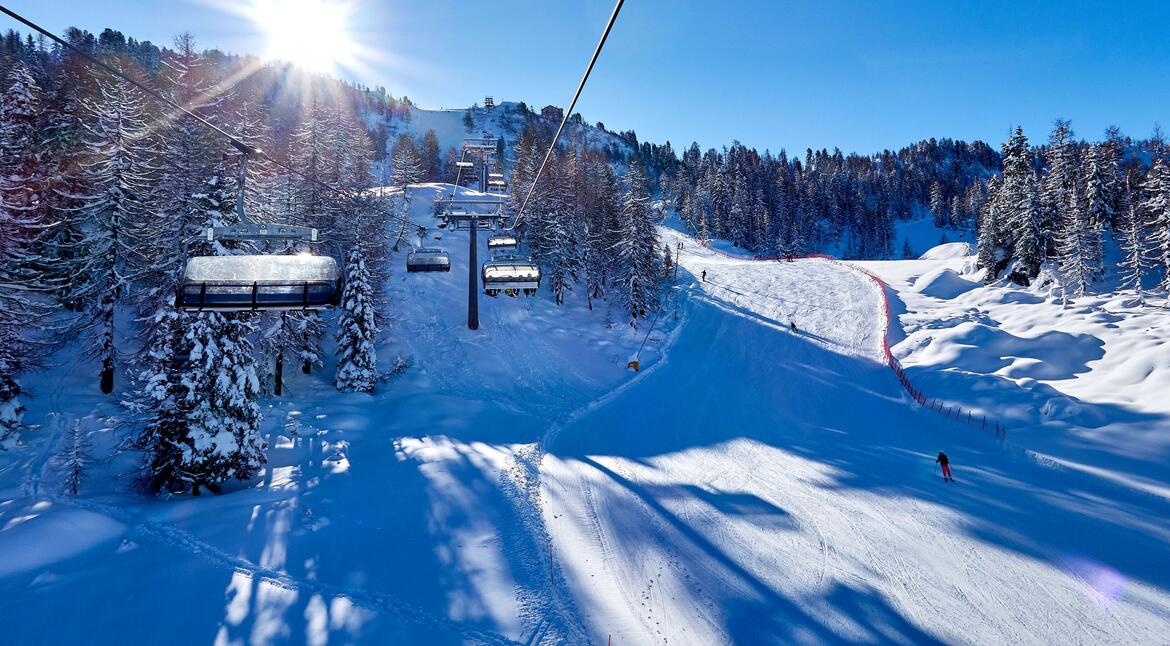The snow cover is decreasing in the northern hemisphere
The snow cover in the northern hemisphere is shrinking due to climate change, and many communities may soon face a "snow loss cliff," according to the most comprehensive assessment to date.
The effects of climate change can vary dramatically from place to place, making it difficult to get a comprehensive picture of snow cover until recently. Now we can see that many of the most affected areas are also those that rely on snow cover for water supply. Other communities that have so far experienced relatively limited impact are about to cross a temperature threshold that would suddenly accelerate snow loss, as demonstrated by new research published in the journal Nature.
"What most people and most of the demands we're placing on water availability, particularly from snow, are where people are living or are about to hit this snow loss cliff," said Justin Mankin, associate professor of geography at Dartmouth and lead author of the new research.
What is the "snow loss cliff"? Researchers found that once average winter temperatures for a watershed exceed 17 degrees Fahrenheit (minus 8 degrees Celsius), even modest temperature increases can significantly accelerate snow loss.
"Once a watershed has fallen off that cliff, it's not about managing a short-term emergency until the next big snowfall. Instead, they'll need to adapt to permanent changes in water availability," said Mankin in a press release.
Previous research has documented the loss of snow cover in a warming world, but this study is different in that it measures how much of that cover is composed of water rather than the geographic extent of snow cover. Most of the water that flows in northern hemisphere rivers comes from snow. This makes it extremely important to understand how snow cover is changing with the climate, especially as communities face increasingly scarce resources.
To conduct their study, the authors analyzed data for 169 river basins in the northern hemisphere from 1981 to 2020. They compared real-world observations with climate model simulations of a world with and without humanity's historical fossil fuel emissions. Then, they used machine learning to study snow trends at the watershed scale. This is how they were able to connect snow trends over the past 40 years to climate change.
"We were able to identify a clear fingerprint of anthropogenic emissions," says Alex Gottlieb, the first author of the new study and a PhD candidate at Dartmouth. In other words, they could clearly see the impact that fossil fuel pollution had on snow trends in the northern hemisphere.
Until now, it has been challenging to establish this connection because global warming leads to both higher temperatures and increased precipitation, which can counteract each other. You could have higher average temperatures, for example, but more snowfall during a storm.
"The study reveals a surprising nonlinear relationship between snow mass and temperature, which has complex implications," writes Jouni Pulliainen, a research professor at the Finnish Meteorological Institute, in a related commentary on the new research.
The authors observed only minimal snow loss in 80% of the northern hemisphere where winters tend to be colder. Some parts of Alaska, Canada, and Central Asia even saw an increase in snow cover. However, if the planet continues to warm, even these areas could fall off the snow loss cliff.
The remaining 20% of the hemisphere that has experienced the most snow loss coincides with most of the population of the northern hemisphere. This includes the southwestern and northeastern United States and central and eastern Europe, where snow cover has decreased by up to 20% per decade.
By the end of the century, some parts of the southwestern and northeastern United States could have almost no snow left by the end of March, the month when there is typically the most snow mass in the northern hemisphere. Snow loss is a major problem for communities whose local economies depend on it. Small ski resorts at lower elevations could quickly see their business disappear as they approach the snow loss cliff. Meanwhile, the southwest has been plagued by a two-decade-long mega-drought and cannot afford to lose the snowmelt that provides water during dry summers.





